Thank you for buying one of our ornament kits. These are the generic instructions that apply to all of our ornaments; please look at specific instructions for your kits for more details.
Tools & Supplies
You will need the following supplies:
- A small soldering iron
- Solder
- Needle nose pliers
- Diagonal cutters or other tool to trim leads and wire
- A power supply for the kit your ordered – either a 5V USB charger or a 12V power supply.
LEDs and Resistors
To keep LEDs from burning up, we will be including resistors that will limit the flow of current through the LEDs and equalize the brightness between different ornaments.
Depending on the color of the LED that we are using the the voltage we are using for the ornament – either 5 volts or 12 volts – we will be connecting chains of 1, 2, or 4 LEDs to a single resistor. The instructions for your kit will tell you how many LEDs to put in the chain for each resistor. If there are multiple colors in your ornament, each color may use a different number of LEDs in the chain.
Creating chains
Here is an example of creating chains of 2 or 4 LEDs, taken from the yellow star ornament:
Note that the LEDs are placed with the longer lead towards the outside of the ornament. That is the basic pattern we use for all of the ornaments.
In these pictures, we are making chains of 2 LEDs. In the left picture, the longer lead on the closest LED is bent towards the shorter LED of the next LED. In the second picture, the short LED on the second LED is bent back towards the long lead from the first LED. Connections between LEDs should always be done in this manner.
Here is what it looks like after creating two chains of 2 LEDs:
A 4 LED chain looks like this, with 4 LEDs connected in a chain.
A full set of chains
The outline of an ornament will be a series of chains; it will look like this:
Adding resistors
After the chains are created, we will need to add a resistor for each chain. The resistors are always connected to the inside (shorter) lead at one end of the LED chain:
When all the resistors are connected, it will look like this:
Hooking the chains together
The next step is to hook all of the chains together. We will do the insides first. This is done with some of the bare copper wire included in the kit. Start by taking the wire and bending it into a rough approximation of the template, and then put that inside the wire.
We will be connected the currently unconnected end of each resistor to the bare wire.
As shown in this picture, you may need to reroute the resistor wire a bit to make it easier to connect to the bare wire. Here’s a close up of that:
Once all the resistor wires are soldered on, trim the resistor wires. Next up are the outer wires. The outer wires run around the perimeter of the LEDs and are soldered to the remaining unconnected LED lead. Make sure the outer wire does not touch any other wires.
It is very useful to clamp the outer wire down as you are routing it around. I use a little alligator clip:
Here’s what it looks like when finished:
At this point we would test by applying the appropriate voltage to the inner and outer bare wires.
Adding the power cord
Locate the power cord – either the USB one with the 5V kit or another one if you are building the 12 volt version.
At the bottom of the ornament, you will find two tiny laser-cut holes. The are for the zip-tie that will hold the power cable in place. Pass the zip-tie from back to front and then to the back again, place the power cable in approximately the location you want and lightly secure it with the zip tie. Solder the power cord wires to the two bare wires, verify that it works, and then tighten the zip tie. Cut off the extra.
Success! You have completed the ornament:
Protecting the wires
The wires only carry low voltage, so there is little shock hazard.
If you want to waterproof the ornament, I have had good luck with 100% clear silicone sealant. Make sure to cover the base all the LEDs and over and under the resistors and all wires. This approach has survived multiple holiday seasons outside in wet and cold weather, but there is no warranty for outside use.

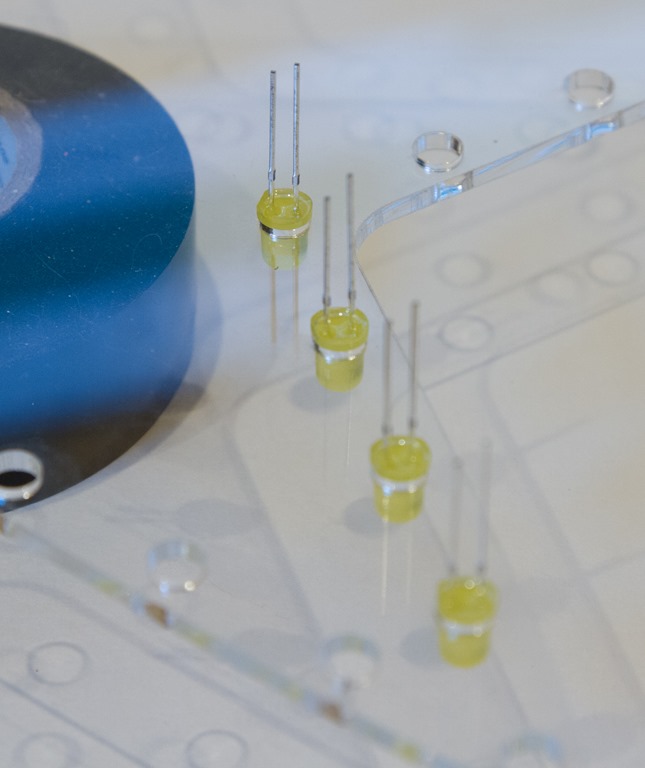
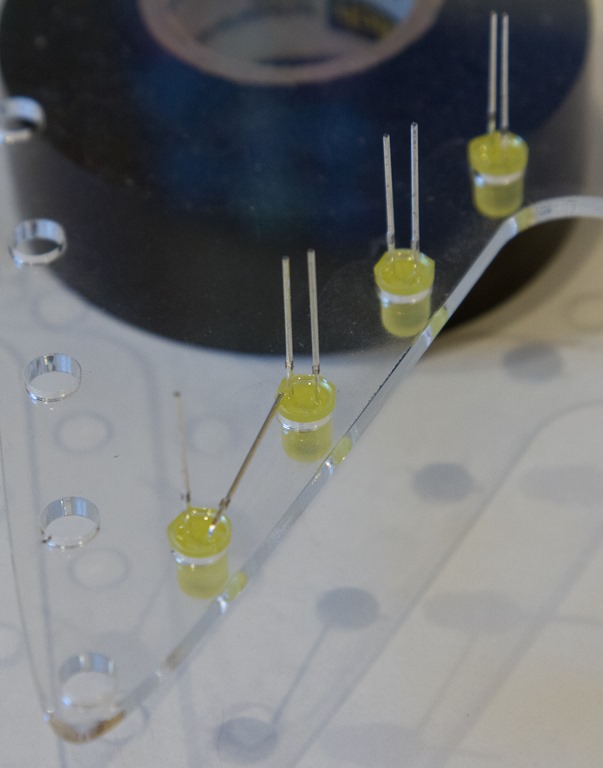
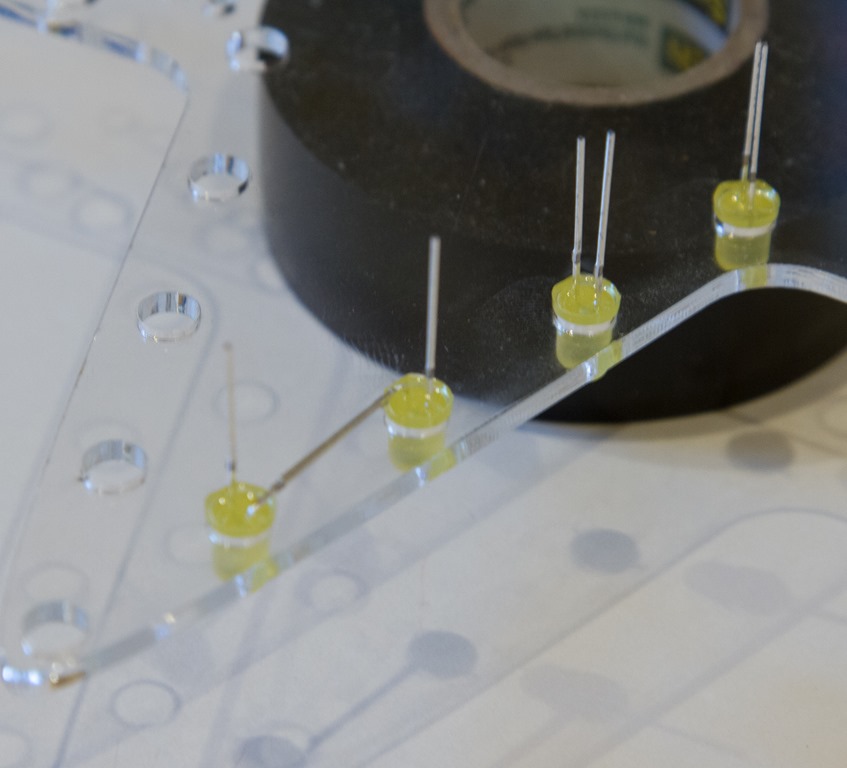
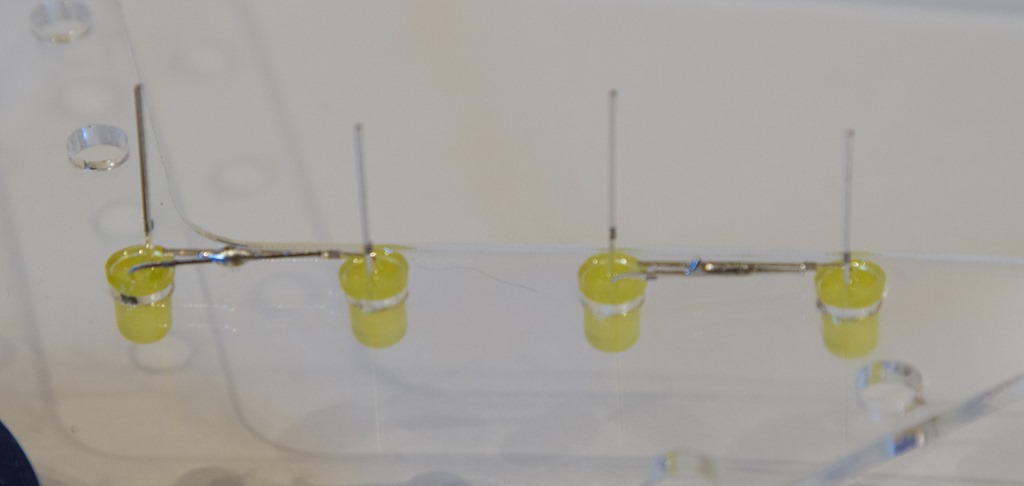
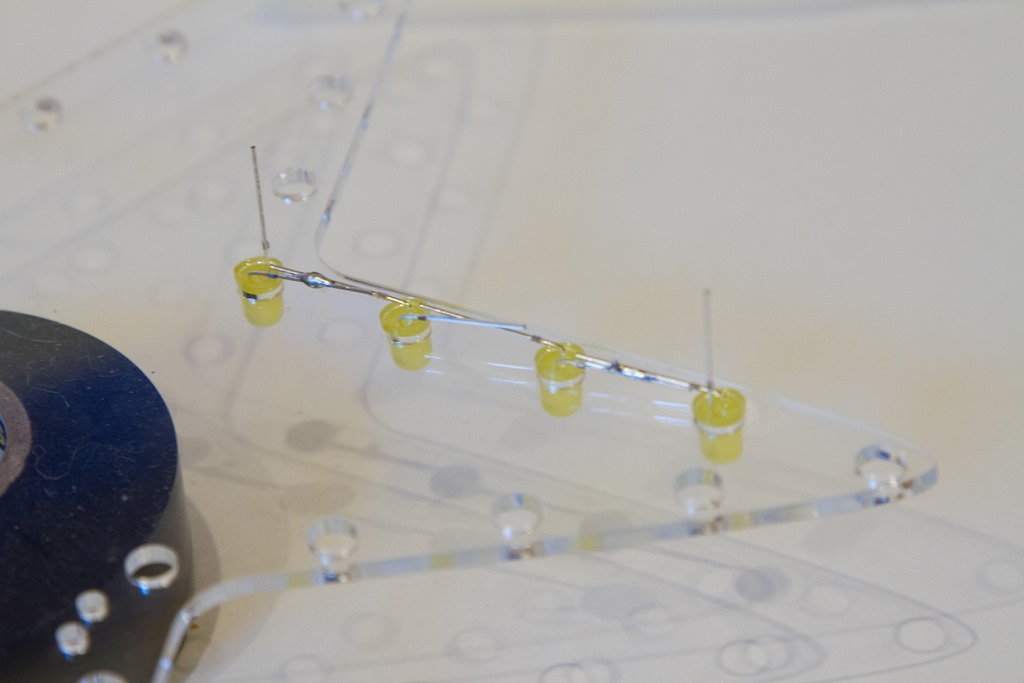
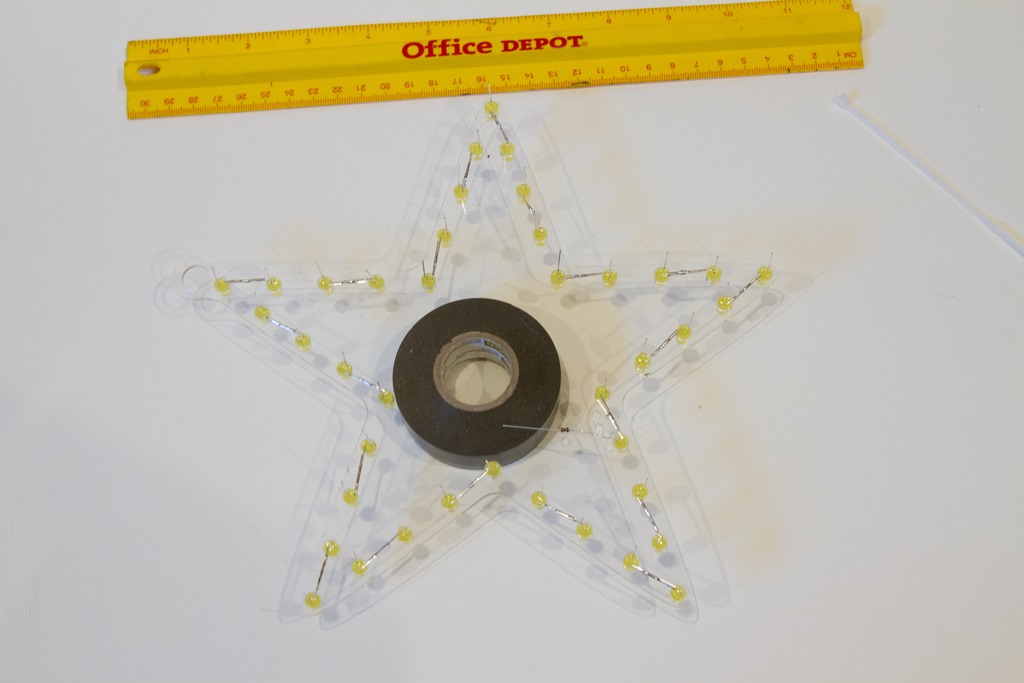
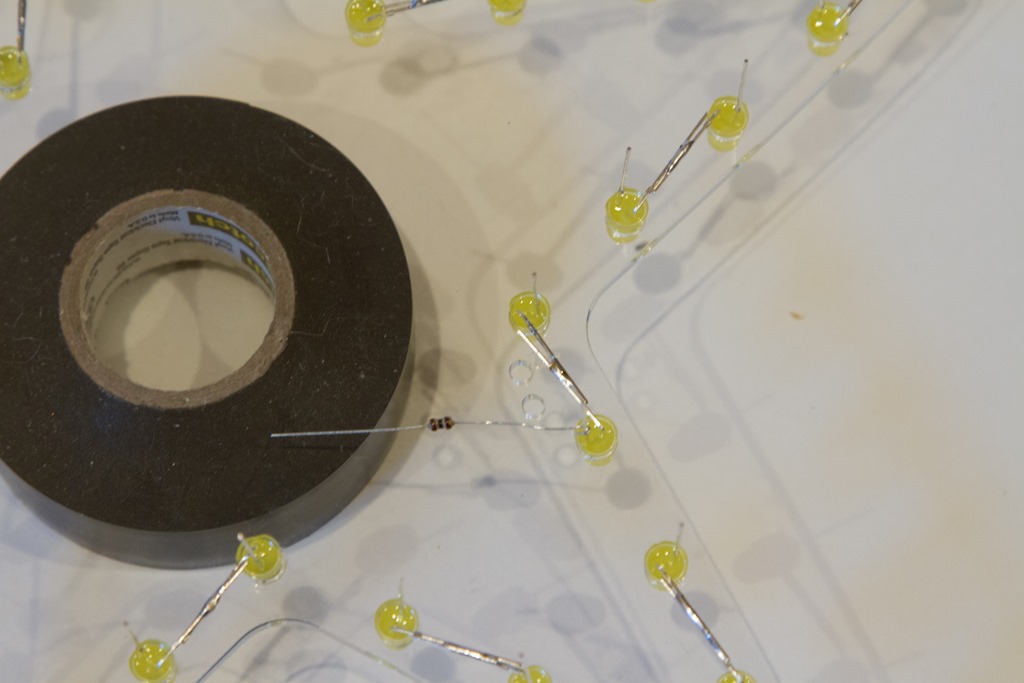
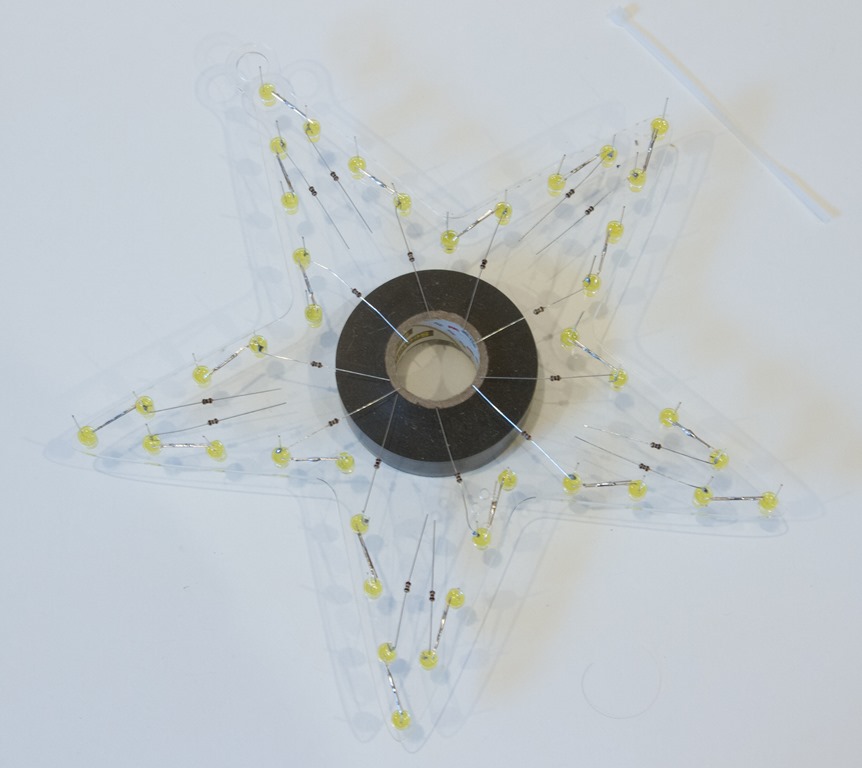
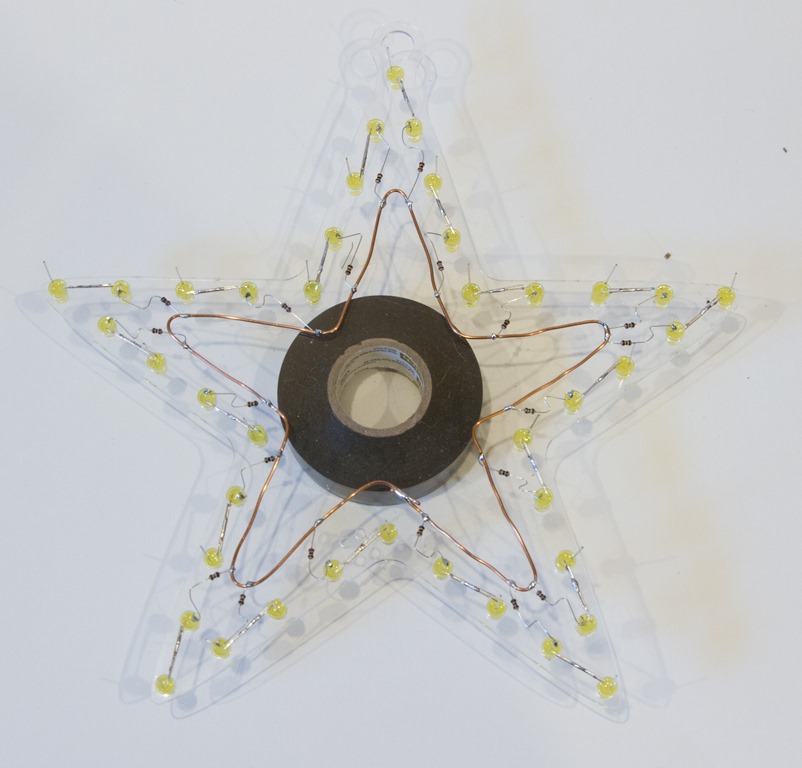
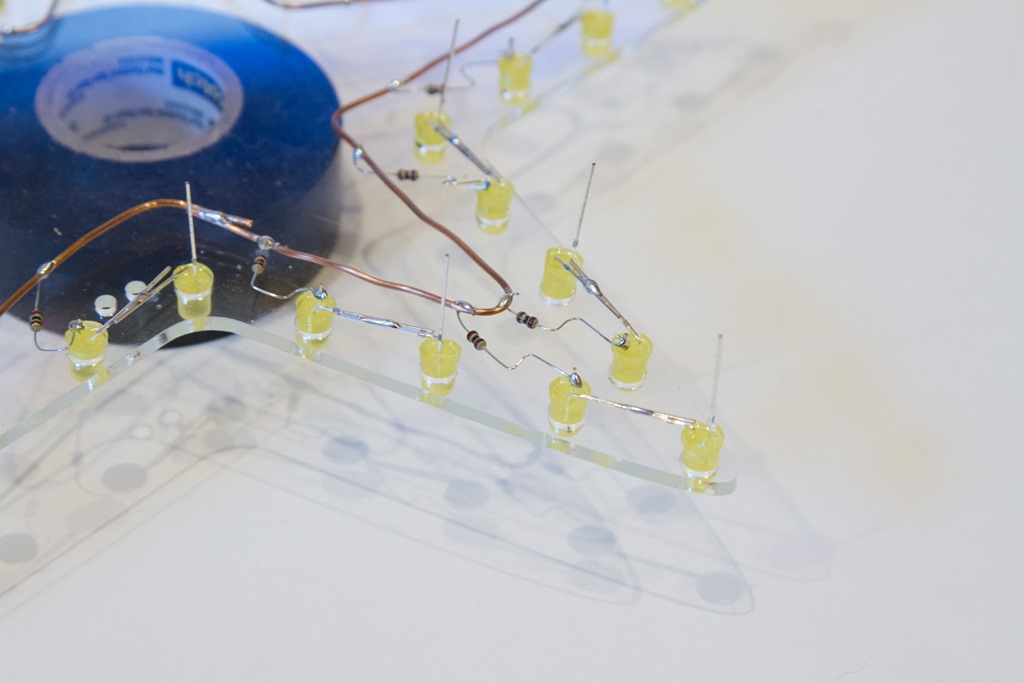
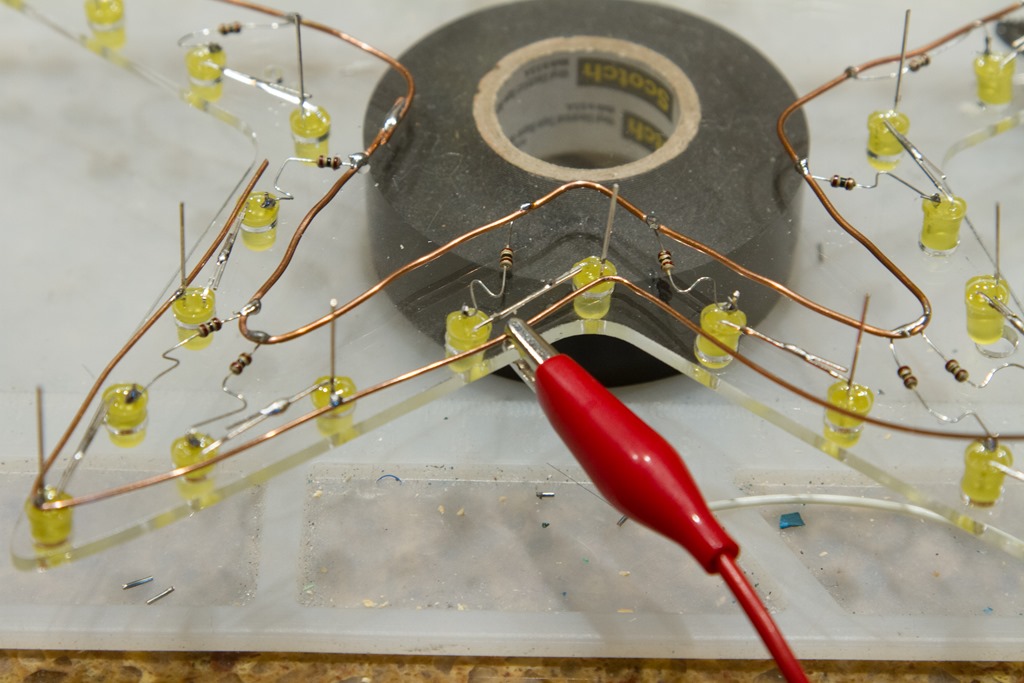
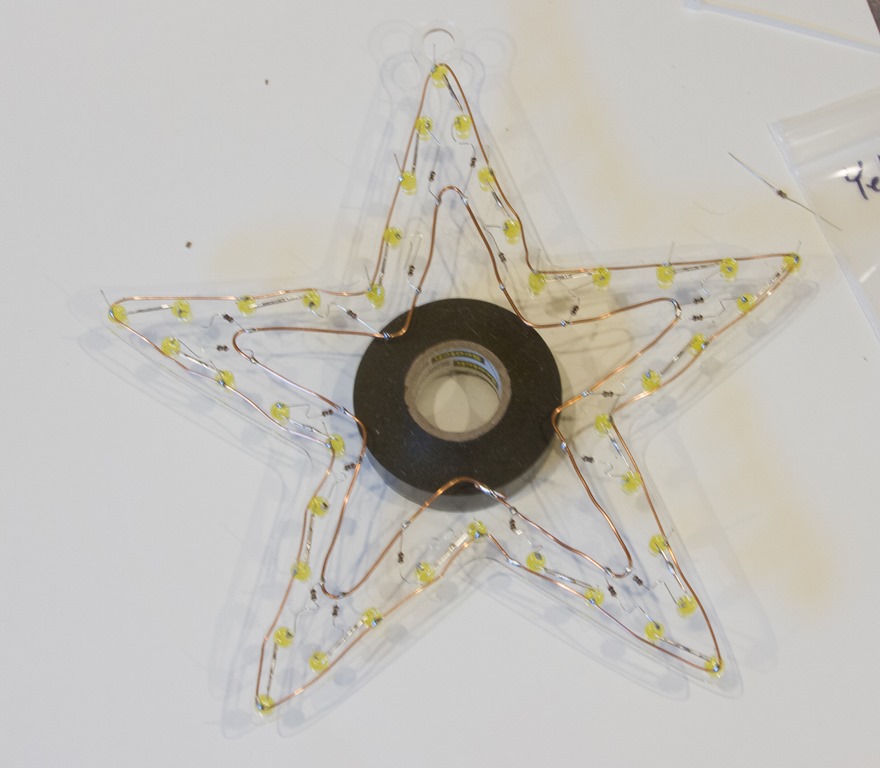
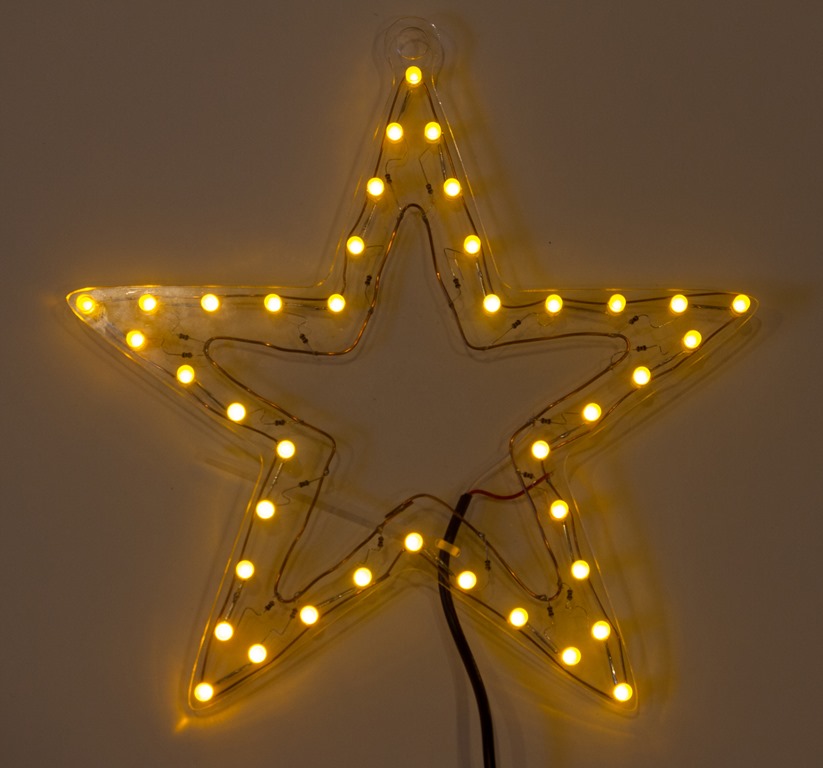
So, what do you think ?